What are the three states that water exists?
Liquid
Solid
Gas (AKA Water vapor)
What is the difference between groundwater and runoff?
**BONUS: where does runoff lead to and from and what does runoff usually carry?** (30 extra points)
groundwater: seeps/soaks into the ground and collects in open spaces between rocks and soil.
runoff: water that flows downhill without sinking into the land.
BONUS ANSWER: runoff carries salts and minerals to rivers/streams, which eventually empty into oceans/seas (this is what makes the water salty overtime).
A cloud near the ground is called what?
**BONUS:How does fog form?** (30 points)
FOG
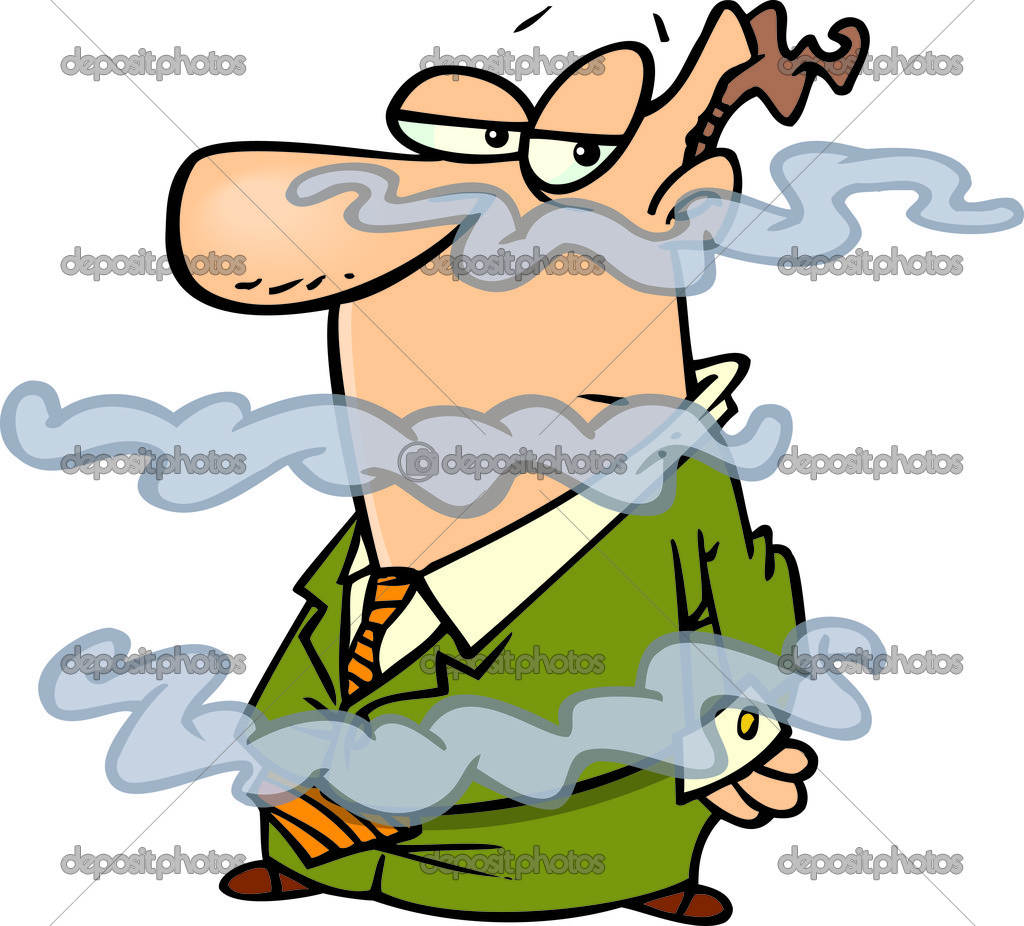
BONUS answer:
moist air near the ground becomes cool enough for water vapor to condense- forming water droplets).
Why is the ocean water cold in California?
The California Current! It brings a cold ocean current to the coast.
How much of Earth's water supply is USABLE fresh water?
70% of Earth's surface is covered with water. 3% of the 70 is fresh water, and only 1% is useable from Earth's water supply (other 2% is either deep underground or found as ice in glaciers and ice caps).
So, <1% is usable (found in lakes and rivers)
What are some negatives of runoff (hint: there are two we talked about, briefly)?
1) Runoff can cause EROSION (the transport/movement of soil/rocks over Earth's surface).
runoff picks off pieces of land and carries them away. The faster it moves, the more erosion happens. 
2) runoff can pick up harmful chemicals and it can pollute fresh water. Thankfully, there are laws that help to protect water supplies.

What is a convection current?
Convection is the process of warm air rising, and cooler air sinking. A convection current is the continuous loop of moving air/liquid.
What EVEN IS AN OCEAN CURRENT?
**BONUS Q:How many types are there and what are they?**
an Ocean Current is a moving stream of water in the ocean.
BONUS A: 2 types: surface currents and deep currents.
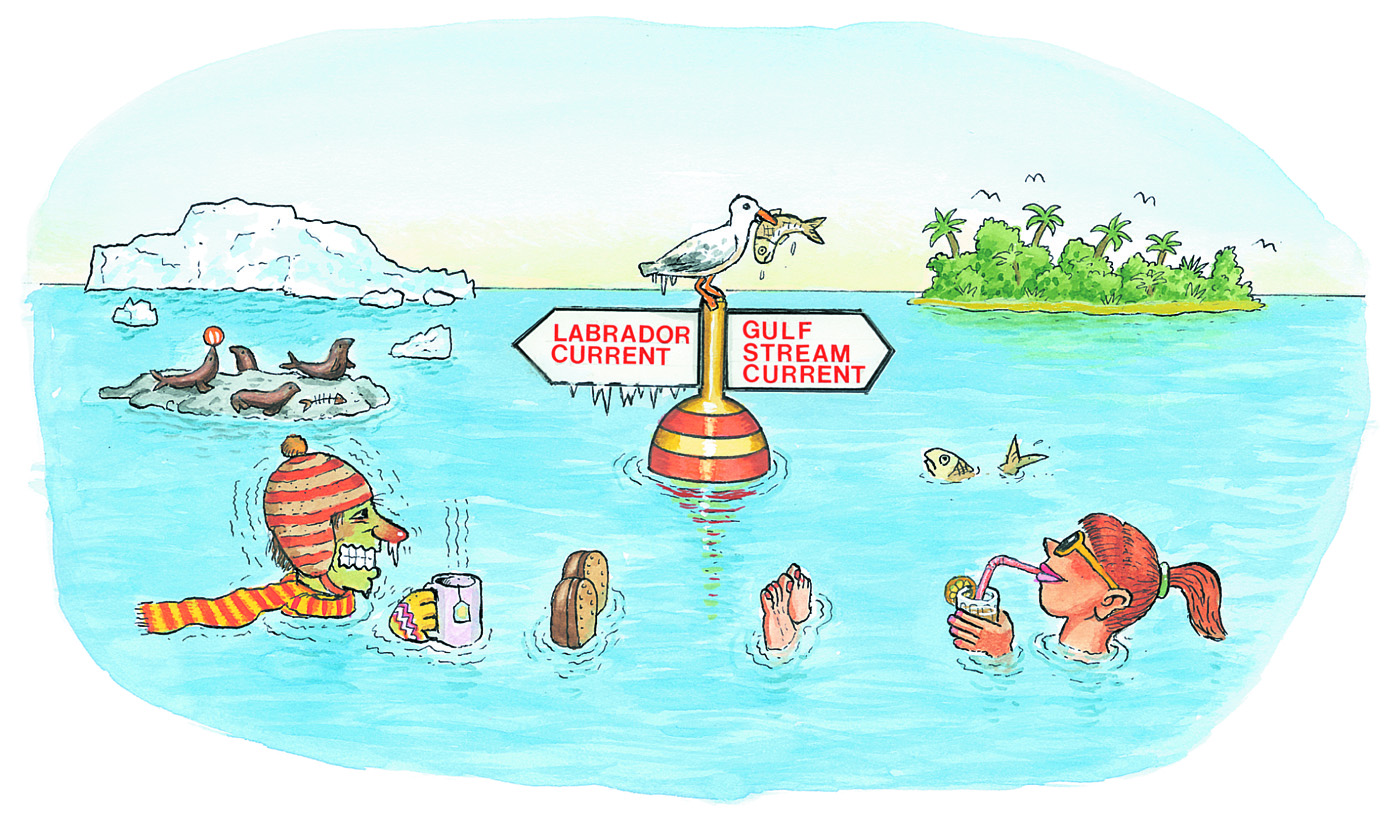
What are clouds?
droplets that remain suspended in the air. They form when water condenses (gas to liquid) as air cools.
What is humidity?
**BONUS Q: what is the difference between humidity and relative humidity?**
The amount of water vapor in the air at any given time!
 The higher the humidity, the stickier it feels! Yuck!
The higher the humidity, the stickier it feels! Yuck!
BONUS A:relative humidity: is how much water vapor is in the air compared to the temperature. So when it is warm, there is a lower relative humidity since warm air holds more water vapor.
TRUE OR FALSE: warm air can carry more water vapor than cool air.
TRUE.
What is the difference between surface currents and deep currents?
Surface currents: move horizontally in big circles, move via the wind and earth's rotations. *Warmer water near the equator moves toward colder poles. cold water moves towards the equator: this balances Earth's temperature.
Deep currents:move vertically, based on salinity and temperature. More dense = more salty&cold = sink. travels across ocean floor till back to the equator where it warms again. cycle continues.
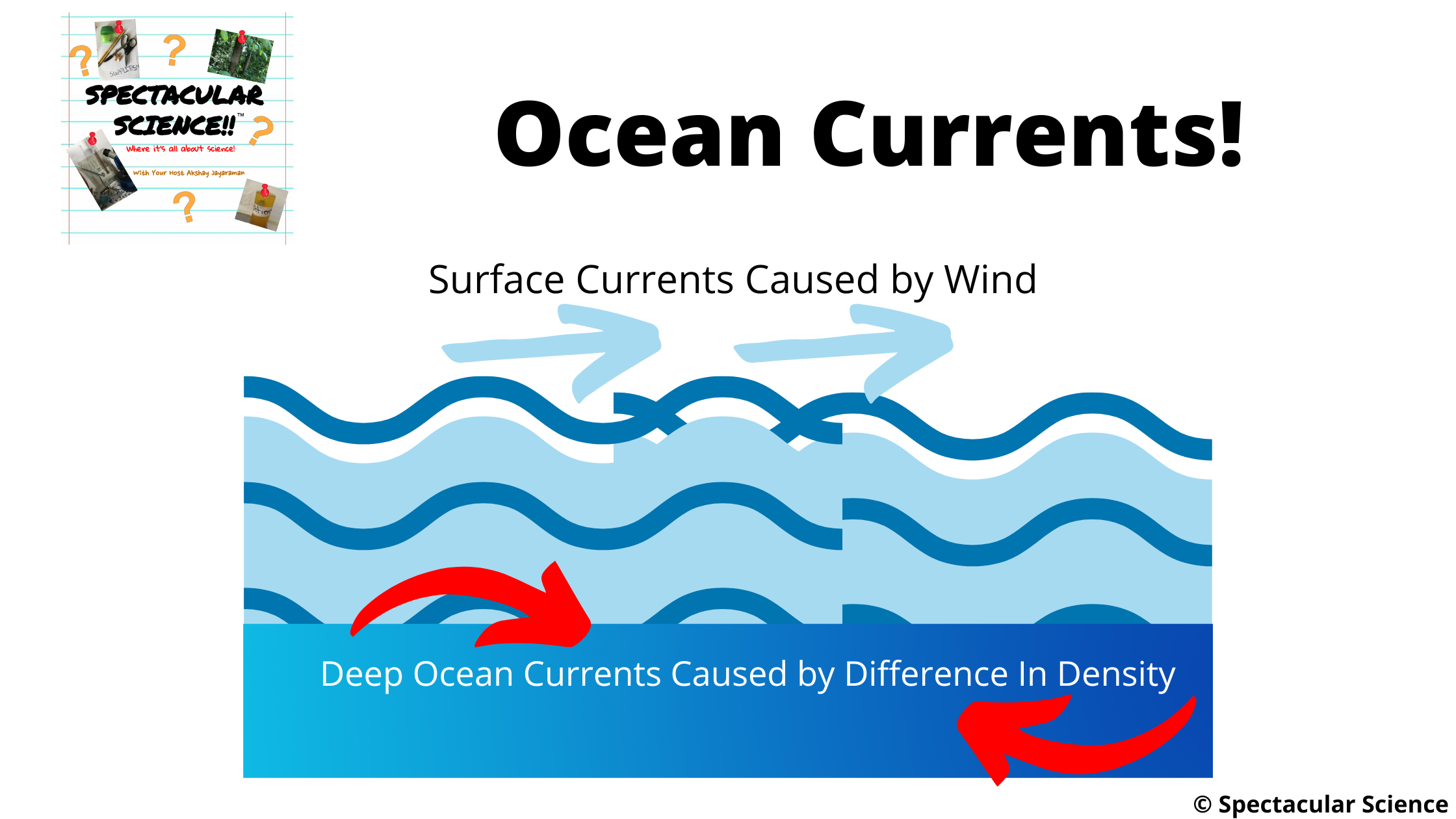
If clouds are so heavy, how do they stay in the sky?
Clouds can hold so much water! They stay in the sky because warm air rises from the surface/ground.
A cloud is less dense than the air below it so it floats!
When the relative humidity is 100% the air is said to be __________.
saturated

TRUE OR FALSE: warm air is less dense than cool air, so warm air rises.
**BONUS: what happens when something is more/less dense?** (20 points)
TRUE, warm air rises because it is LESS DENSE than cool air.
BONUS answer:
more dense = sinks
less dense = floats
oceans hold the summer heat longer than land, so the coast is usually warmer than inland in the winter. Why are coasts usually colder in the summer?

Because the ocean heats up so slow (since it has such a high specific heat capacity), the oceans are cooler, which cool the land nearby.
Explain the water cycle in a quick and easy way. Use the words evaporate and condense.
The water cycle is the pattern of which water evaporates, rises, forms clouds, condenses into drops, falls, soaks into the ground, and runs back into bodies of water again.

the temperature at which air becomes saturated is known as its ___________.
Dew point
what are some different cloud types? Which bring heavy rains/thunderstorms?
Cumulonimbus! 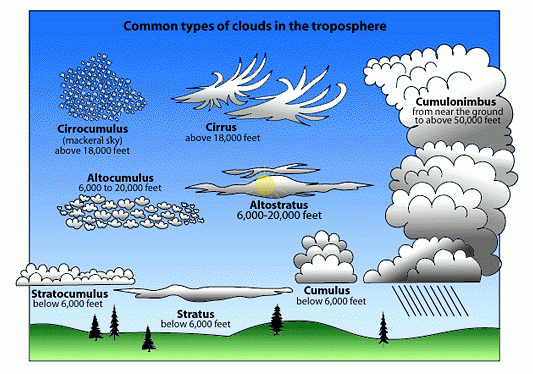
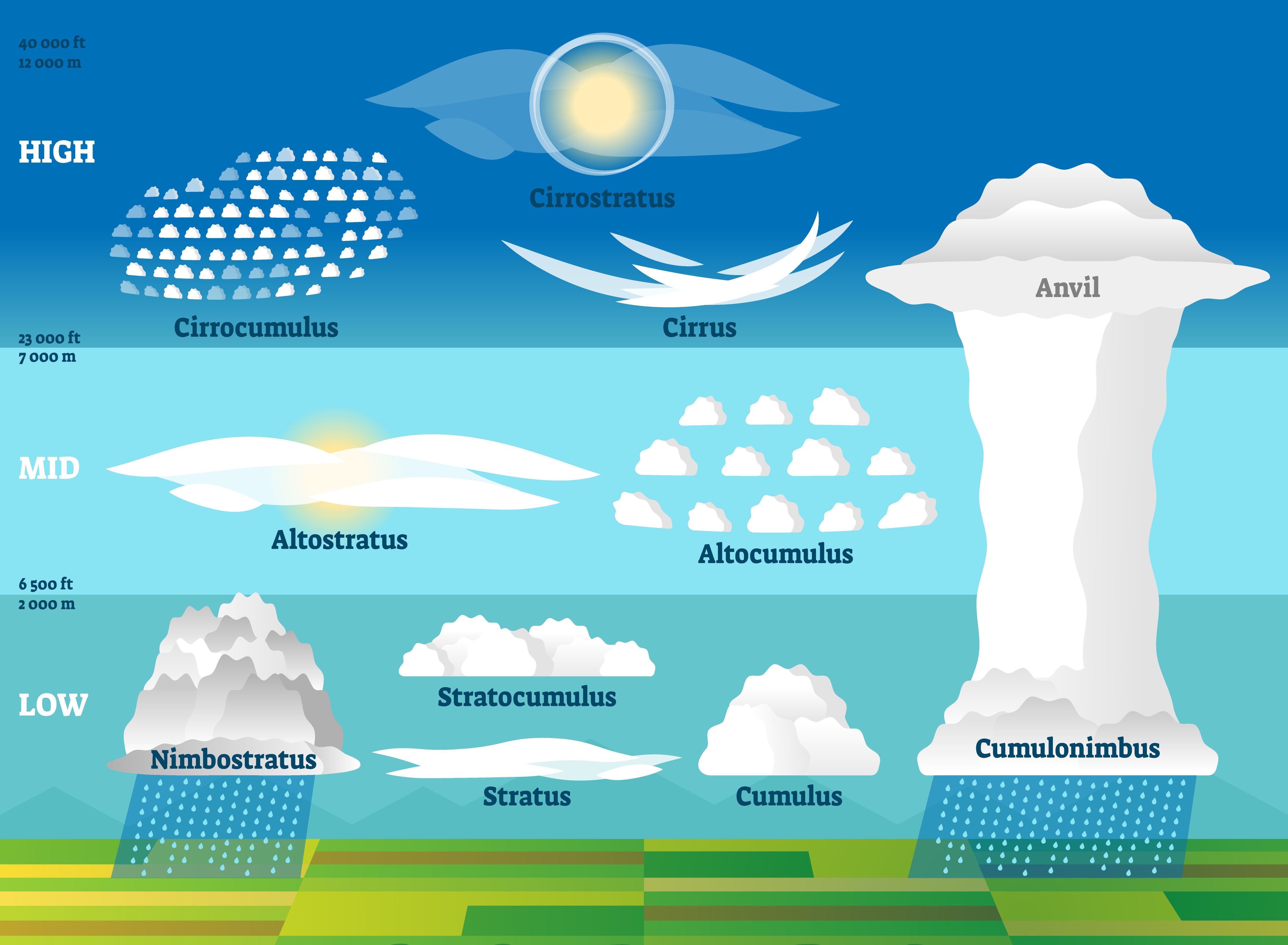
TRUE OR FALSE: When something has a higher specific heat capacity, it takes LONGER to cool down and LONGER to heat up.
TRUE.
Think of the ocean in the fall months. Its usually warmer since its after the summer months where its hot. In the summer, the water is cooler since it takes a while to heat up.
The process of turning from a liquid into a gas due to heating (via the sun) is ____________(1).
The process of changing back from a gas (water vapor) to a liquid due to cooling is _________(2).
In ____________(3), the leaves of plants release water vapor into the air.
In __________ (4), additional cooling occurs, changing the liquid into a solid.
When heavy enough, droplets from the clouds fall as rain, sleet, snow, or hail. This is called ____________(5).
(1) EVAPORATION
(2) CONDENSATION
(3) TRANSPIRATION
(4) FREEZING
(5) PRECIPATATION
How do clouds form?
water vapor condenses into clouds as humid air rises and cools.
When liquid water falls from clouds it is called (1)_________?
When it's cold enough in the cloud, water vapor turns into crystals called 2)___________?
When rain freezes on the way down, it falls as (3)________.
When pieces of ice form in the clouds from rain or snow then move up and down in a cloud, they fall as (4)________?
(1) RAIN
(2) SNOW
(3) SLEET
(4) HAIL
What does specific heat capacity mean?
**BONUS: When you eat a HOT cheese pizza, why is the cheese hotter than the bread?**
the heat needed to raise a substance's temperature by 1 degree Celsius.
BONUS answer: the cheese has a higher specific heat capacity since it absorbs more heat

